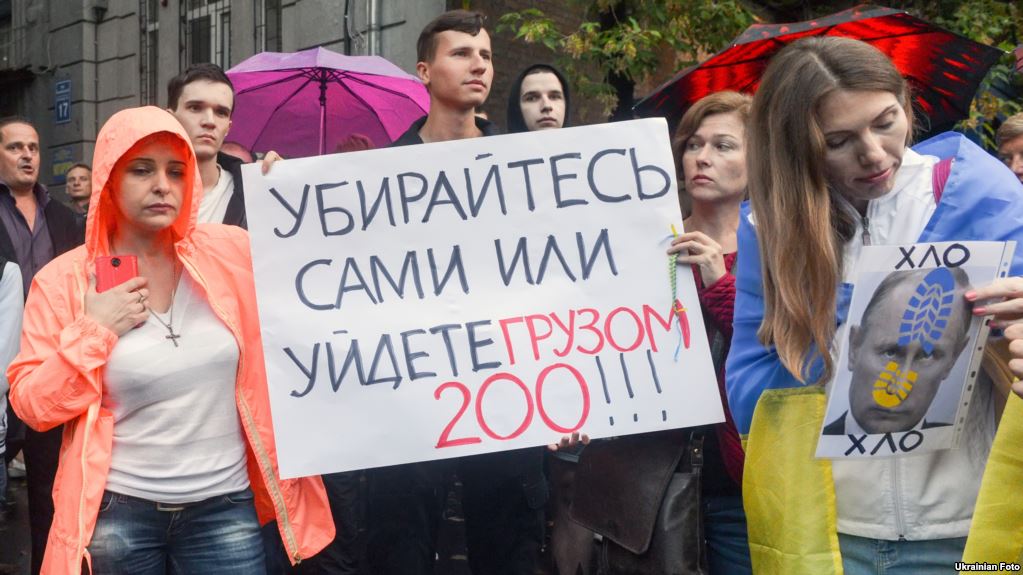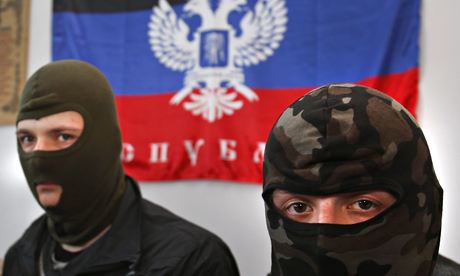The 25th anniversary of the Transnistrian conflict is a more significant date for Ukraine than for Moldova. This is because attempts to resolve the conflict in Moldova and to restore its territorial integrity prove that Russia does not intend to leave the territories it occupies. And it does not matter how Russia explains it. Russia can only be “driven out” from foreign lands.
The Transnistrian conflict was organized by leaders of the former Soviet Union who had approximately the same goal as did Russia in organizing the conflict in the Donbas. In Moldova the supporters of independence held strong positions. Moldova was another Soviet republic, together with the Baltic countries and Georgia, that did not see its future in the Soviet Union long before the August 1991 coup. And then the Kremlin decided to look for “weak spots” in these republics. For Moldova, this was Transnistria, the several regions with predominately Russian and Ukrainian populations. These regions were patched together to form a new “republic” that advocated the preservation of the USSR. On August 19, 1991, the leaders of this insane creation supported the Moscow putsch, while the Moldovan leadership supported the Russian President Boris Yeltsin. It seemed that after the defeat of the putsch conspirators the issue of the restoration of the territorial integrity of Moldova would be decided on its own. The leaders of the separatists were arrested in Kyiv. The only thing lacking was the presence of the special operations of the Moldovan security forces to destroy the separatist abscess and restore the territorial integrity of the country.
However, when this operation began, it turned out that the leadership of the new Russia was not going to abandon the imperialist policies of its Soviet predecessors. On the side of the separatists were the troops of the Soviet Red Army led by the chauvinist general Alexander Lebed. Backers of the chauvinistic policy in the Russian leadership — Vice President Alexander Rutskoy and the presidential adviser Sergey Stankevich — arrived in Tiraspol to support the separatists. At that time, Russia had already occupied part of the Moldovan territory and the president of the country, Mircea Snegur, had signed an agreement on the principles of settling the armed conflict in the Transnistrian region of Moldova. The other signatory, incidentally, was President Boris Yeltsin. The head of the Transnistrian region, Igor Smirnov, was simply the witness to this ceremony. In this fashion, 25 year ago, Russia recognized that, in fact, it was an occupying country in Moldova.
During these 25 years there has been no fighting in the region. But the restoration of Moldova’s territorial integrity has not taken place. To claim that some independent state has been created on the territory of Transnistria would also be a great exaggeration. What is more likely is that a criminal regime has been created that exists on Russian money in an atmosphere of lawlessness. But this regime is corrupting not only itself but also the politicians and business people in the free territory. You can talk endlessly about the battle with corruption, the principles of European integration and the new economy, but you will not build a state when there is a “black hole” next door without real borders but able to use your laws, your customs terminals and tax rules. Not to mention that there is a real center of anti-government propaganda in your state, whose practitioners constantly interact with the citizens on the free territory. Is it any wonder that during the recent presidential elections in Moldova, the winner was the pro-Russian populist politician Igor Dodon, who does not hide his ties with the Kremlin? The Transnistrian authorities organized special transportation for their voters to the polls in Moldova. Yes, the residents of the separatist enclave are still citizens of Moldova, from which they want to secede. And they are ready to vote as instructed by Moscow.
When the occupier leaves the Donbas, there will be no difference between Donetsk and Mariupol.
Now, 25 years after the collapse of the Chisinau’s attempt to restore the territorial integrity of the country, one can say that Russia has succeeded in its attempts to stop the development of Moldovan statehood. And this is true despite the fact that Transnistria does not even have common borders with Russia. But Donbas does have them. And if the occupied Donbas regions ever become part of Ukraine on “Transnistrian” conditions — or become the same kind of frozen conflict zone — a similar disaster awaits Ukrainian statehood.
What can be done when there is no possibility to free the occupied territories? To begin with, to recognize that they are occupied. That there is no control over them. That these territories, along with their businesses and residents, do not exist in Ukraine’s legal sphere. There is no need to abandon one’s land. But one must not pretend that those who live in free Ukraine and those who are under Russian occupation have the same opportunities. Citizenship is not only a passport. It is also a system of obligations. Yes, a plan for freeing the Donbas is needed. But a program to aid those who want to leave the occupied territories if the occupier does not leave is needed as well. And the understanding by those who remain that from a given point in time their future will be determined by the occupier.
Additionally, Ukraine needs a real border — with Russia and with the territories that it occupied. This border could be called the line of contact but it must exist. After the liberation of Donetsk and Luhansk, this boundary will be removed. But for now this is as much Ukraine’s border in fact as is the Khutor Mykhailovsky check point (at the Ukraine-Russia border in northeastern Ukraine — Ed.) , beyond which the occupation begins.
What is important now is not how to integrate the occupied territories into Ukraine but how to avoid this integration before the end of the occupation. I have absolutely no doubt that when the last invader and the last mercenary leave the Donbas, there will be no difference between Donetsk and Mariupol, between Svatove and Luhansk.
But as long as the enemy is there, Transnistria is there.







